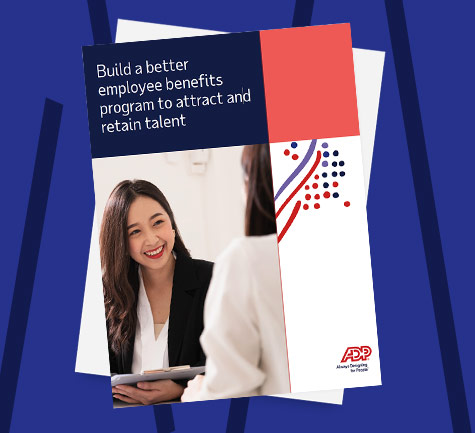Even in a healthy work environment, personal and financial pressures can quickly mount up. In fact, ADP’s People at Work 2022: A Global Workforce View found that 78% of Americans admit they experience stress at work at least once per week and 53% believe their work is suffering due to poor mental health. To help employees deal with these issues, employers may implement an EAP (employee assistance program).
Table of Contents
What is an employee assistance program?
Employee assistance programs offer free and confidential counseling services to help workforces address various personal and work-related problems, such as:
- Workplace conflicts, including managerial changes, bullying and harassment
- Career management, including professional development plans and help managing relationships with co-workers
- Mental health issues*, including depression, anxiety and grief management
- Behavioral health issues*, including alcohol or substance abuse and gambling addiction
- Family issues, including divorce, separation and abuse
- Health and fitness issues*, including general fitness and nutrition advice or help managing chronic diseases
- Legal concerns, including marriage counseling and custody issues
- Financial issues, including bankruptcy, loan management and debt repayment
- Caregiving, including help locating daycare services and nursing homes
How does an EAP work?
Participation in an EAP is voluntary and services are confidential. Employees who take advantage of an employee assistance program usually have access to virtual self-help tools and referrals to qualified professionals outside their employer’s organization, such as:
- Counselors
- Financial advisors
- Legal firms
- Healthcare professionals
- Childcare and elderly care specialists
- Fitness and nutrition experts
These specialists help employees and their dependents understand and address personal issues before their quality of life or work performance is negatively impacted. Yet, EAP benefits are not always long-term solutions to problems since employers may limit the number of referral sessions covered under a plan.
Employee assistance program benefits
A happy and healthy workforce can lead to many organizational efficiencies. Employers who roll out an EAP may be able to:
- Attract and retain talent
- Limit unplanned absenteeism
- Improve employee productivity and engagement
- Reduce the risk of workplace accidents, violence or other safety incidents
- Support disaster and emergency preparedness
- Lower healthcare costs associated with mental health issues
How to create EAP policies
Employers offering employee assistance programs should ensure employees fully understand who is covered and what services are available. These details, in addition to the following, are usually outlined in an official EAP policy document:
- What is an employee assistance program and what is its purpose? – Introduce EAP, define all key terms and explain how the program can benefit employees.
- Employee assistance program examples – List all available digital resources and in-person services.
- Eligibility – Breakdown who the program covers in addition to the employee, including spouses, domestic partners, children and any other applicable dependents.
- Costs – Explain how many referrals are covered and estimate fees for additional services.
- Contact details – Provide the number of a referral agent, i.e., an HR professional, union representative, EAP specialist, etc.
- Confidentiality agreement – Let employees know that management cannot access information about how they use the program.
Employee assistance program FAQs
Is it mandatory to provide an employee assistance program?
There are no federal laws mandating EAPs, but employers who offer them may be able to improve employee morale, engagement and retention, among other benefits.
What is EAP counseling?
Counseling sessions can cover any topic that distracts or hinders employee happiness and performance in the workplace.
How much do EAP programs cost employers?
Different employers offer different EAP benefits, meaning that costs can vary from one business to the next, depending on the extent of the services provided.
*Consult legal counsel before providing access to licensed medical professionals or telemedicine services through an EAP.
This article is intended to be used as a starting point in analyzing EAP benefits and is not a comprehensive resource of EAP requirements. It offers practical information concerning the subject matter and is provided with the understanding that ADP is not rendering legal or tax advice or other professional services.




